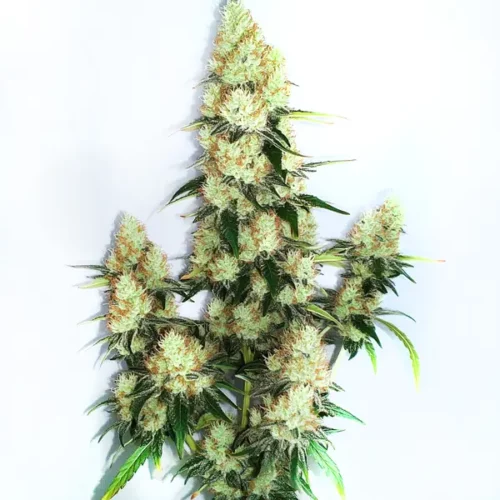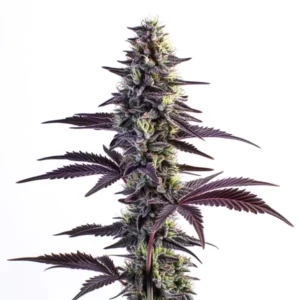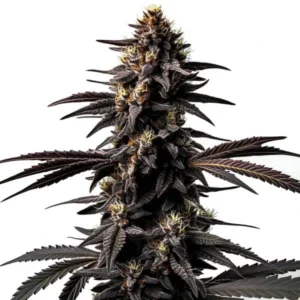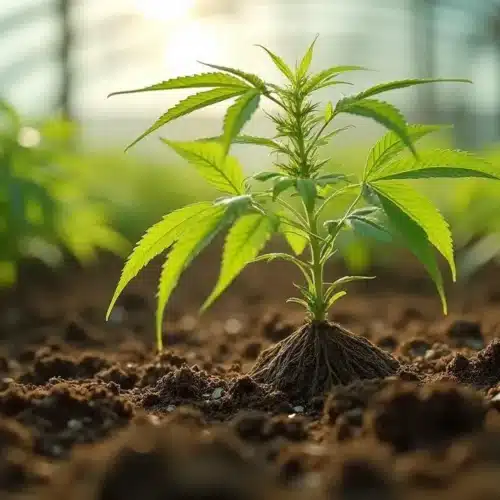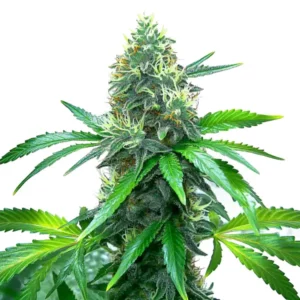Watering may seem very simple; however, a certain technique is required to avoid watering in the wrong way, exceeding the amount of water that should be provided to the plant, or leaving it scarce. If you’re wondering how much water for the cannabis plant?, the answer depends on factors like the plant’s growth stage, the size of the container, and the substrate’s drainage capacity. If what you want is to grow strong and healthy plants with robust and solid buds, then read this guide carefully as we will give you all the necessary concepts to achieve the best irrigation for your cannabis plants in cultivation.
We can say that one of the great details of plant irrigation is that there is no exact or standard measure for irrigation. For example, as plants grow and when they change their cycle, they present other needs for their development. Therefore, there are other requirements regarding the water they receive. However, there are other factors when it comes to watering a weed plant.
Recommended Strains
Hindu Kush
 THC: 15% - 19%
THC: 15% - 19% Type of seed: Feminized
Type of seed: Feminized Phenotype: Mostly Indica
Phenotype: Mostly Indica Day to flower: 8 - 10 weeks
Day to flower: 8 - 10 weeks
Kush XL Auto
 THC: 14% - 17%
THC: 14% - 17% Type of seed: Autoflowering
Type of seed: Autoflowering Phenotype: Mostly Indica
Phenotype: Mostly Indica Day to flower: 8 - 10 weeks
Day to flower: 8 - 10 weeks
First stage: Growing
Here, the plants will have different needs and everything depends on the moment of maturity of the plant. We know that in their early stages of development, seedlings and clones need much less water, therefore we clarify that this guideline is for mature plants in the vegetative stage.
At first, when the plants are small, that is, seedlings, and you are growing in soil indoors, consider how much water for the cannabis plant is appropriate to maintain moisture. If you use a very strong jet, you can flood the plant and damage the roots. In other words, you can even kill your plant due to excess water. Therefore, a sprayer is best to maintain good hydration of the seedlings. Every 2 or 3 days, you can spray, but use the precaution of checking the substrate, ensuring it is dry before watering to avoid excess water.
Promos & Deals
Irrigation frequency
It is normal that when we are new to cultivation, we wonder how often to water cannabis and may end up overwatering our plants. That is why to avoid this problem, we share an irrigation program so that you have a reference for the days that you should water according to the stage in which your plants are in.
First, if we are not in the germination phase, that is, when the cannabis seed has already been sown in the substrate after it has germinated and is expected to sprout from the ground, we must wait between 4-7 days for each irrigation. Here, we can apply a tip which consists of covering the upper part of the cups or containers where the newly germinated seed is planted. With this, greater humidity is obtained in the substrate, avoiding the evaporation of water and stimulating the substrate to maintain humidity.

In the event that we start cultivating directly in the soil, it is essential to consider how much water for the cannabis plant at this stage to avoid overwatering or underwatering (an option that is not recommended). With the seed, seedling, or clone that you have selected for your garden, it is recommended to protect it so that it is not damaged by animals or insects. You can use a bottle to put on top and cover the seedling or cutting. This also stimulates moisture to remain in the substrate, preventing the water from evaporating all at once, which reduces risk.
When we have the seedling with the first pairs of leaves, we can water every 3-7 days, always trying not to flood the substrate so as not to damage the roots. Here, we can continue watering with a sprinkler in order to keep the substrate moist to provide good hydration for the plant.
When watering in the veg stage, you can water every 2 to 4 days, preventing the plant from going thirsty. It is necessary to maintain the humidity and feeding parameters so that it continues to develop optimally. Here, you can irrigate with larger amounts of water such as 500cc or even more than 1 liter of water, depending on the size of the plant, the pot, and the substrate used, among other factors.
Now, when the plant begins to flower, you can water between 2 to 3 days on average and use fertilizers and stimulants for this stage of the crop. We do not recommend foliar irrigation in the leaves of the plants because fungi can appear in the buds and damage the final harvest. It is best to maintain root irrigation and use microorganisms that activate life in the substrate so that the plants have excellent flowering.
Substrate or soil to grow weed
The soil or substrate where weed is grown is essential. The plants prefer the most aerated substrate and with good moisture drainage possible. For this reason, it is good for the containers have holes in their bases so that the extra water of each irrigation is filtered out. When more compact mixed substrates are used, not as much irrigation or water is required as they tend to retain a greater amount of water for a longer time. This can be a problem because fungi, pests, and different types of deficiencies can develop which will end up damaging the plant.
So, to check if the soil or the substrate in which it is grown drains water well, you can do an easy test that consists of determining how much water for the cannabis plant is retained. If, after 3 or 4 days, the growing medium is still moist or if, after watering, it takes several minutes to lower the water, it means there is a drainage problem. To avoid this issue, you can add perlite to the soil or substrate. Perlite allows the mixture to be aerated and improves its drainage capacity because it helps the water drain from the pot properly. It is important that there is a good relationship between water retention and humidity so that the substrate is 100% efficient in growing weed.
We talked about growing in substrate and how it should be in order to drain the water well, concentrate enough moisture, and support optimal performance. Now, we’re going to share some components and other culture media that can be used for efficient cultivation.
Coco Fiber-Coco Peat: In other tutorials, we have talked about how to grow in Coco and today, we highlight Coco fibers again because they are of great help for growing in pots because they have the ability to retain moisture and water well. . For this reason, avoid overwatering so you don’t have problems with the roots.
Rock wool: It is used a lot in indoor crops because it has a good capacity to absorb, drain water, and retain moisture. A large number of gardeners use it for root cuttings because thanks to its qualities, clones tend to produce more roots that are stronger and more abundant. In the rock wool, they create authentic networks that provide support to the plants in their first phases of growth.
Size of the pot for growing marijuana
There is no doubt that this is also one of the factors that influences the amount of water that is going to be delivered to the plants. This is because a balance is necessary between moisture retention and drainage of water and moisture itself. Therefore, it is good to start from small pots to larger containers.
We recommend using small pots at first because if a very small plant is placed in a large pot, it is likely to have problems with excess watering and this will affect the plant. On the other hand, if you have a very large plant in a small pot, this specimen will feel suffocated by the little space and will receive less water than it needs.
Lighting and temperature in indoor weed cultivation
The temperature caused by the lighting system in an indoor crop will determine the amount of water that a plant needs in each irrigation. Therefore, it is good to determine which lighting system is being used because if you use Sodium lights, the temperature will be higher than with LED lights.
This causes plants to require much more water with HPS-type lighting than with LED or low-consumption lights. This is one of the variables that sometimes causes problems for gardeners. Therefore, it is always good to maintain temperature and humidity control inside the crop with meters such as hydrometers.
Water with balanced PH
It is important to make it clear that water, as we already know, is essential in cultivation. However, not any type of water will work. It must meet certain requirements. How much water for the cannabis plant? This depends on the plant’s stage and environment, but regardless of quantity, the water must have a balanced pH. During the vegetative period, it should be between 5.6 and 5.8, while in flowering, it must have a level of 6.0 to 6.2. To have control over the pH of the water, you must use a pH meter which gives you the correct parameters. In grow shops, you can buy products to regulate the pH, either to raise or lower the levels.
Using a cheap aquarium air pump for 24 hours, you can make the water increase the oxygen it contains which is very beneficial for the roots of the plants and helps keep them healthy. But that’s not all because during this process, chlorine is also removed from the water which is an element that tends to kill or destroy the micronutrients in the water that are so necessary for cannabis plants. Therefore, this process has a double benefit.
What relationship does excess humidity have with the watering of plants?
The relationship between excess moisture and plant irrigation is important because as we have explained in this article, there are substrates that retain more moisture and water while others do so to a lesser extent. On the other hand, certain lighting systems can promote more heat and humidity in an indoor grow.
It is good to clarify that plants consume water both through their roots and through their leaves and also consume nutrients through these two. However, plants also transpire through their leaves, that is, they release water. So, all of these processes can lead to plants being exposed to more humidity in each watering and generate an imbalance in indoor cultivation.
To avoid this type of problem, growers often use dehumidifiers, devices with which they seek to reduce humidity levels in indoor crops in order to carry out irrigation correctly without over or under watering.

To make the selection of varieties that we present to you, we took into account a fundamental factor, “which are the varieties that need less water to survive in the crop?” To answer this question, we had to go back to the ancestors of the genetics that we offer you and from there, we selected the following cannabis strains. Remember that you can buy the best marijuana seeds of the highest quality that do not require excessive watering at Blimburn Seeds.
Now, in this selection of strains that do not need as much water at the time of cultivation, it must be taken into account that it is a just reference. This does not mean that the plants can grow on their own, but that they also require care. Here, we are going to talk about the Kush varieties which are mostly indica and have their origins mainly in areas such as Afghanistan, Iran, northern Pakistan, and northwestern India, taking their name from the Hindu Kush mountain range in Central Asia. These strains were brought to the United States in the mid to late 1970s and today, they are the queens of the cannabis market in Canada, the US, Europe, and the world.
Hindu Kush
Hindu Kush is perhaps one of the most classic varieties of the Kush family. It has exquisite THC levels, ranging from 15%-19%, with a short flowering time of only 50 to 70 days. Also, the harvests are surprising because you can collect 500-600 gr/plant outdoors and about 450-550 gr/m2 indoors. As it is an heirloom strain of the original Hindu Kush and is used to dry climates such as that of the valley of the same name, it is considered to be a variety that tolerates drought a little better than most.
Kush XL Auto
Kush XL Auto could not be left out of this list as it is one of the varieties most desired by gardeners who are looking for large harvests in a short time and without much work or care. Kush XL Auto withstands dry, hot climates and does not require excessive amounts of water, although if you give it some love, it will reward you with yields of 200-300 gr/plant outdoors and 300-400 gr/m2 indoors.
Northern Lights Kush Fast Version
Northern Lights Kush Fast Version has the quality of being one of the fastest flowering varieties because it only takes between 6 to 8 weeks, delivering yields of 500-600 gr/plant outdoors. Indoor growers will collect between 400-550 gr /m2.
Its effect is typical of indica varieties, super relaxing and leaves you in a state of deep sedation which mixes with earthy flavors that are natural in Kush genetics with citrus notes. The potency is incredible, ranging from 15%-19% THC. It adapts incredibly to drier or Mediterranean climates, enduring the days when it does not need water. In spite of that, it always appreciates good organic nutrition with water at its perfect PH point.
You are now ready to start growing like a true champion because you will be able to water your plants without going over the limits or leaving your weed plants thirsty. Stay connected with us as we have more blogs to help you become the gardener you dream of being. See you on the next blog!
FAQs
How often should I water my cannabis plants during each stage of growth?
The watering frequency depends on the growth stage. Seedlings and clones require very little water and benefit from misting every 2-3 days to keep the substrate moist. During the vegetative stage, mature plants need watering every 2-4 days, while in flowering, watering every 2-3 days is recommended. Always check the soil moisture before watering to avoid overwatering.
What type of soil or substrate is best for proper cannabis irrigation?
Cannabis plants thrive in well-aerated substrates with excellent drainage. Soils mixed with perlite or coco fiber are ideal because they balance water retention and drainage. Compact soils should be avoided as they retain too much moisture, increasing the risk of root rot, pests, and fungal growth.
Why is pH balance important for watering cannabis plants?
Using water with a balanced pH is essential for nutrient absorption. During the vegetative stage, maintain a pH of 5.6–5.8, and during flowering, adjust it to 6.0–6.2. A pH meter helps monitor levels, and using dechlorinated or oxygenated water further supports healthy root development and strong plant growth.


